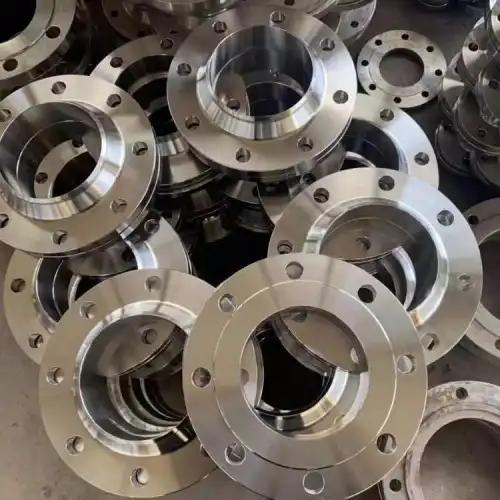Flanges are essential to providing safe, efficient, and reliable piping systems. They connect pipes, valves, pumps, and other equipment in the piping industry. There are a variety of flanges to choose from, each designed for a specific purpose. Socket weld flanges (SW) and lap joint flanges (LJF) are two types of flanges used in many applications. This blog post will take a deep dive into the differences between these two flange types and explain which flange is best for your application.
Socket weld flange
A socket weld flange is a flange that joins two sections of pipe together using socket welding as the joining method. The process involves inserting the ends of the two pipes into open sockets and applying pressure or heat to form a secure connection. Socket weld flanges are ideal for low-pressure air and gas applications, but can also be used in high-pressure systems where welding or threading is not possible.
Lap joint flange
Lap joint flanges are pipe fittings that connect two pipes and provide access ports for inspection or modification of the piping system. This type of flange connects components in a piping system by using lap joints that are bolted to each other to form a secure joint. It is used where frequent disassembly is required and the flange can be easily removed without affecting the rest of the system.

Difference between socket weld flange and lap joint flange?
Purpose
One of the differences between socket weld flange and lap joint flange is their use. Socket weld flanges are used in high-pressure applications where the pressure load mainly appears on the weld, not on the flange. On the other hand, lap joint flanges are used in applications where frequent disassembly is required. They are often used when space restrictions prevent the use of full-length butt weld flanges.
Design and Construction
The two types of flanges also differ in their design and construction. Socket weld flanges consist of a socket weld that is welded to the pipe end but not to the flange. The flange is slipped over the pipe end and then welded to it. Lap joint flanges consist of two parts: a support flange that is bolted to the pipe, and a loose sleeve that is placed over the pipe and support flange. The flange can then rotate freely around the sleeve, allowing for easy assembly and alignment.
Cost and Availability
Cost and availability are other important factors when choosing between the two flange types. Lap joint flanges are generally less expensive and easier to use than socket weld flanges. The manufacturing and installation of socket weld flanges are generally more time-consuming and require more skilled labor, which increases costs. Lap-joint flanges are ideal for applications that require regular disassembly for inspection or cleaning.
Pressure rating
The pressure rating is the maximum pressure that a flange can withstand without failure. Socket weld flanges have a higher pressure rating than lap-joint flanges. This is because the load is mainly applied to the weld, while the strength of the sleeve limits the lap-joint flange. Socket weld flanges are recommended for high-pressure applications, while lap-joint flanges are suitable for low-pressure applications.
Use cases
The last factor to consider is where the flange will be used. If you need to frequently disassemble for maintenance and inspection, then the lap-joint flange is your best choice. On the other hand, if you need a flange that can withstand a high-pressure environment, the socket weld flange is a better choice
Conclusion
In summary, the choice between socket weld flanges and lap-joint flanges depends on the requirements and limitations of the application. Socket weld flanges are suitable for high-pressure applications, while lap-joint flanges are ideal for applications that require frequent disassembly for maintenance. In addition, cost and availability are also one of the factors to consider. We hope that you have a better understanding of the differences between these two flange types, which will help you make an informed decision when choosing the right flange for your specific application.











